I am relatively certain that I live in the most difficult area in the entire world to gain access to raw (read: REAL) milk. Not only is it completely, totally illegal to sell in my state (via retail OR farm sales, for humans or pets), but alternative legal loopholes such as herd shares are virtually nonexistent, and depending on who you ask — not allowed by the powers that be. From what I gather from farmers in our community, most are much too afraid of getting terrorized by the FDA and other government agencies to even attempt such blasphemy against the USDA-based dietary doctrine.
Literally my only available solution toward being able to consume healthy, unpasteurized milk is to buy a dairy animal, and milk it myself. Thankfully, Pre-Hubs and I are blessed with the land and resources we need to accomplish this. We got our animal, she gave birth, and any day now, we’ll be able to milk her, which we have been anxiously awaiting.
But in the time leading up to this momentous occasion on our homestead, I’ve had to make use of alternatives to drinking the real, healthy raw milk we didn’t have access to.
I know there are plenty of real-fooders, WAPF-followers, and other health-conscious readers out there who are in a similar position — they simply do not have access to raw milk, period. So, I think it’s important that we talk about what your options are when you just can’t get the real thing.
The next-best milk
The first important step in consuming healthier dairy is to find the best quality milk that you can. Realizing that we are not counting real, fresh, raw milk from pasture-raised cows, here are your next-best bets:
- Good…kinda: Hormone-free, whole (full-fat) milk from a smaller dairy (rather than a big-name brand which is likely comprised of CAFOs) pasteurized at the lowest temperature allowed. Be VERY careful about purchasing organic milk — the majority of it is UHT — or “ultra-pasteurized.” Avoid this!! UHT milk has been pasteurized at even higher, more damaging temperatures than regular ol’ CAFO milk! It is essentially dead and devoid of any nutrients, and is not at all a healthy choice. It doesn’t even need to be refrigerated, if that gives you any sort of clue as to how fake of a food it is!
- Better: Milk meeting all the above qualifications, plus being non-homogenized, organically-raised, and preferably local. Homogenization damages and denatures the milk, and it will be much healthier if it’s left with that delicious glob of cream on top. Also, it is quite possible for your small, local dairies to be raising their dairy cows organically, even though they may be unable to afford the thousands of dollars it costs for that “USDA Organic” label. Contact them if you can and ask how their animals are raised!
- Best (besides raw): Milk meeting all above qualifications, plus from entirely grass-fed cows. Again, a smaller, local dairy may be more likely to raise their dairy cows on grass pastures — the only diet that is truly natural for cows! Healthy milk comes from healthy cows, and healthy cows eat grass. Simple stuff.
Don’t drink it — eat it.
Since processed milk has been stripped of much of its nutrients and enzymes through pasteurization, it’s important that we add them back in through fermentation. Sally Fallon, president and founder of the Weston A. Price Foundation, explains:
“If you cannot find good quality raw milk, you should limit your consumption of milk products to cultured milk, cultured buttermilk, whole milk yoghurt, butter, cream and raw cheeses.”
-Sally Fallon, from RealMilk.com
The great thing about this is, you can make a lot of those foods yourself for cheap! We already know how easy it is to make your own yogurt out of milk — this is how I’ve been consuming the pasteurized milk I have to buy. I eat my homemade yogurt multiple times a day. It’s a great way for me to get some of the nutrition dairy provides, with the added benefit of healthy cultures to make up for what was lost in pasteurization.
In addition to cultured dairy, you’ll notice that Sally lists butter and cream as being okay to consume in pasteurized form. There’s a reason for this — butterfat is much more resistant to the damage caused by pasteurization, than the proteins found in the water portion of the milk. This means that pasteurized butter and cream are still worth buying, and can be a healthy addition to your diet. Just like with milk, grass-fed means you’re getting the highest quality, so look for that above others. Even still — any pasteurized butter is better than no butter at all!! (and is certainly better than —*gasp!* — fake butter!)
If you have access to non-homogenized milk, you likely will also be able to find minimally-pasteurized cream (again, you do NOT want “ultra-pasteurized”). Of course, you could always just skim off some of the cream from your unhomogenized milk, and use that! With your cream, you can easily make your own butter, which of course results in a nice little supply of buttermilk as well. Both can be cultured for added health benefits (see Nourishing Traditions or watch this video for how to do this).
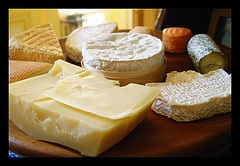 As for cheeses, see if you can find some at your local farmers’ market. Even in states where raw milk is illegal, raw cheese which has been aged at least 60 days is legal everywhere. If you can’t find local raw cheese, take this tip from Sally to see if you can find imported raw cheese in stores (or order online
As for cheeses, see if you can find some at your local farmers’ market. Even in states where raw milk is illegal, raw cheese which has been aged at least 60 days is legal everywhere. If you can’t find local raw cheese, take this tip from Sally to see if you can find imported raw cheese in stores (or order online):
“Raw cheese is available in all states. Much imported cheese is raw — look for the words ‘milk’ or ‘fresh milk’ on the label — and of very high quality.”
-Sally Fallon
Pasteurized dairy as a beverage
There are some things you just kinda NEED to drink milk with. Pancakes? Banana bread? Cookies?! I don’t know about you, but those are milk must-haves for me. Thankfully, there are ways to make your second-rate milk drinkable, and even nutritious.
Since cream is resistant to pasteurization damage, as we mentioned before, it is actually going to be much healthier for you to drink watered-down pasteurized cream, than conventional (pasteurized) whole milk. This is what Sally Fallon recommends.
Your other option is to drink cultured milk — you may know this as kefir. Though I have not yet tried it yet (I’ll definitely share with you guys when I do!), I hear that making kefir isn’t too difficult. You’ll need to purchase some kefir grains, these are the starter culture which will cultivate your milk and make it into kefir. You can get these from our friends at Cultures for Health — they even have great tutorial videos to teach you how to make your kefir, and any other fermented foods you might want to try!
Ain’t nothin’ like the real thing, baby.
Of course, any dairy product is going to be infinitely healthier for you when consumed in its raw, natural state. If you don’t live in a red state like me (where absolutely no raw milk sales are legal, as found on the Farm-to-Consumer Legal Defense Fund site), you just may be lucky enough to get real, raw milk from a farmer near you. Visit RealMilk.com for a list of local, raw milk dairies in your state, and support them as much as you can!
Do you live in an area where raw milk is impossible to find? What have you done to get around this real-food roadblock?
{This post is linked to Fight Back Friday at the Food Renegade, Simple Lives Thursday, The Homestead Barn Hop, Monday Mania at the Healthy Home Economist, and Fat Tuesday at Real Food Forager!}

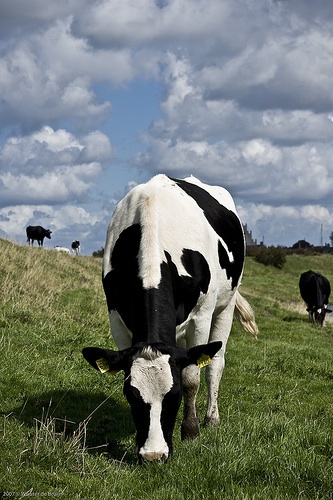
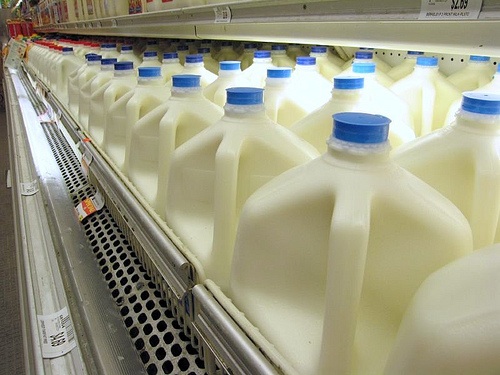
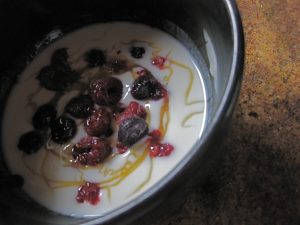
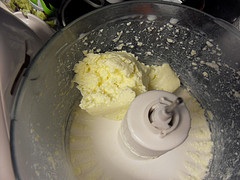
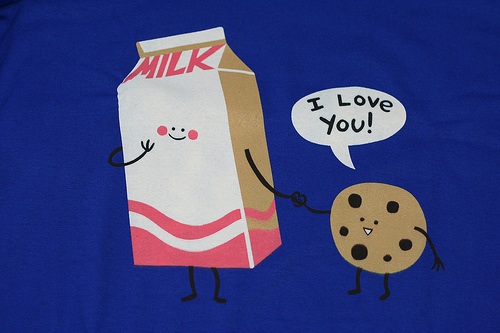
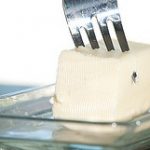


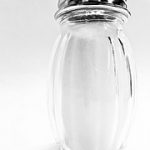
Also under “better” or “best” would be to determine which breed of cows the dairy herd is. Brown Swiss, Jerseys, and Guernseys are preferred over Holsteins due to two reasons. 1) Holsteins have been bred by the large dairy producers to produce a high volume of watery milk per animal, with lower milkfat. The other breeds have a better nutrition profile. 2) Holsteins have the A1 beta casein protein mutation that leads to inflammation-related diseases.
Very good point! I plan on getting into the whole Holstein/beta casein issue after I read the book, “Devil in the Milk,” and review it here. I thought it would be best for this post to keep things as simple as possible so as to not overwhelm — but you are definitely right that choosing milk from traditional breeds over Holsteins is best! Thanks so much for your comment. 🙂
Thanks! This is a really great article. At this point in life, we can’t get raw dairy either. I’ve been buying pasturized milk from a local dairy instead and REAL BUTTER. 🙂 The dairy also has cream….and cream makes everything better.
Making kefir is super easy! We love it! When you’re ready, I can send you some grains via mail if you like. 🙂
Stacy you are the sweetest!! Gosh that would be amazing to get some kefir grains if you have extra! I’ll email you — you’re the best.
Oh and everyone click over to Stacy’s blog — it is AWESOME. 😀
The only problem with buying straight cream is that even at the local dairies near where I live, they put that carageenan (sp?) crap in it.
I can remember in the late 1970’s you can buy raw cow’s milk and raw goat’s milk in Central OR. What’s going on with these government agencies? Getting payola from the dairy industry?
Pretty much, Susan. I posted about some of the political BS going on here: http://butterbeliever.com/2011/08/05/whats-in-my-milk-part-three-war/
Gov has to have their fingers in everthing. They can’t figure how to tax it so they make it illegal.
Making milk kefir is VERY easy.
This is an opportune post for me! We just moved to Alabama after enjoying glorious dairy freedom in Belgium (with the US Army) for three years. We have found a local dairy that sells low-temperature, non-homogenized, grass-fed milk. We are really glad we found them and it’s an acceptable option for us for the next two years that we’ll live here. Then who knows where the Army will take us. Hopefully somewhere I can get raw milk, and especially raw cream! I can’t find raw cream at all, the only stuff I can find is ultra-pasteurized. 🙁 But we’re grateful for what we can find and we’ll keep looking! Thanks for the post!
Thanks so much for your comment, Kate! That’s too bad that you no longer have a source for raw like you once did before. 🙁 But you are lucky to have the local dairy selling that quality pasteurized milk! I am surprised that you can’t find low-temp pasteurized cream — could you ask that dairy if they sell it, or would consider selling it? I am in the same position in that there is NO non-UHT cream sold anywhere here. Not in Whole Foods, not in health stores, nowhere! I sure hope Dorothy (our dairy sheep) will churn some up for us — haha!
We live in Chattanooga…does your source by any chance sell near here?
Hi,
This post is so informative. I would love for you to come
share it at FAT TUESDAY. I hope you will
put FAT TUESDAY on your list of carnivals to visit
and link to each week!
http://realfoodforager.com/2011/09/fat-tuesday-september-13-2011/
So I was just wondering what you give little ones if you can’t get raw milk. My raw milk source just went dry (literally 🙂 and now I am at a loss of what to give my son to drink in his sippy cup. He is almost 2 now but it still seems like he should be having some milk each day. I am able to get local grass fed non-homogenized low temp pasteurized jersey milk from our health food store. I have been making yogurt with that and also some unsweetened banana chocolate shakes for him with that milk. I also recently tried coconut and almond milk but I am not sure if that is really that good for him. I was just wondering what your opinions were. Is he at an age that its ok for him to just eat yogurt for his dairy consumption. He does love cheese but there is no way we can afford raw cheese so I just buy regular cheese and butter right now.
Good question, Lori. In my opinion, you are already on the right track in turning that quality pasteurized milk into yogurt rather than drinking it straight. You can also try to make kefir out of it, as that would turn it into a cultured product more conducive to drinking than yogurt is. (although the shakes sure are a great idea to make with it!) But, I would try to see if your health food store has low-temp pasteurized cream. Sally Fallon recommends drinking watered-down cream as opposed to pasteurized milk. That would probably be easiest for a go-to sippy cup filler, I think!
As for the milk alternatives, you are right to question the coconut and almond milk. My thoughts on those are — if you make it yourself, go for it! Processed, store-bought almond milk is often loaded with fake, unhealthy ingredients. Coconut milk also commonly contains preservatives or fillers. Both are easy to make! Here’s a great coconut milk tutorial (you don’t even need a fancy blender for this one!) http://www.pennilessparenting.com/2011/08/homemade-coconut-milk.html
And, I would be willing to bed you can do the same thing with almonds. I would soak and dry the almonds and then grind them up in a coffee grinder. I’m gonna try it and post about it when I can!
almond milk is simply almonds .. soaked & dried as you suggest.. mixed w/water and blended in a high powered blender. strain if you desire (i don’t)
My twins were born at 7 mo. and did not gain a lot of wieght. The doc. said I could not give them raw milk so I gave the half cow and half goat milk with distelled water. Then the Doc said they were getting to fat. You just can’t please everyone.
I never realized there were people who could not get raw milk. We’ve had dairy goats before, but now barter for our milk. We have new kid coming any day so in a year we will be back in milk…so to speak. Thanks for the info. Very helpful.
Emily, I am thinking so much about this! My oldest went to a college experience camp this summer and was on 2% milk in the cafeteria. For the most part, the food there is pretty good but we are going to have to request whole milk. There is a close by health food store in walking distance and I am going to call the owner and see about milk for my son. The college is in a very rural area with no real milk for two hours! AND junior won’t have a car either! I am praying that some other way of getting milk (some one closer with cows we could “buy”) presents itself before next fall. But since that is not likely, we are going to work on ideas just like yours above. Thanks for putting out the info. People need options, particularly when they live in areas hostile to real milk.
I should also mention that when he came home, he drank an entire half gallon in fell swoop! He said he could “feel” it working in his body. He had been, umm, suffering digestively a little bit on the 2% processed milk. Just don’t tell him I told you, or your scores of readers!
I live in WV – another “red state”. So, we have our own Jersey and Holstein! We milked the Jersey for 11 months, and are waiting for her to freshen again in the next 2-4 weeks. Our Holstein is a heifer, and she’s due with her first calf in the next 4-6 weeks. I’m hoping to turn her milk into lots of cheese and yogurt. 🙂 I have my own cows, but I really wish it were possible to buy/ sell it here in WV. With just milking the Jersey, I was pouring out all kinds of milk just because we couldn’t use it all. 🙁
I aam sure you must have friends or family to GIVE your extra milk to. That is what I did when I had to much.
If you have some space and it sounds like you do you could consider some feeder pigs to give you milk to. It would beat just dumping it. Or you could learn to make cottage cheese and other types of cheese with it.
Thanks so much for sharing this informative post at Fat Tuesday. It’s too bad that we have to have so many road blocks to good health. Hope to see ou next week!
I used to live in Fort lupton colorado. I sold milk all the time.And I was not the only one that did. You just have to know where to go. make friends with someone who has a milk cow and there you go you got fresh milk.
When you have a farm as I did you now who the people are who are coming to you for milk ,butter and eggs. The INSPECTOR always drove a ratty blue pickup, so we new not to sell to him. I guess now days they anin’t that smart. They all drive county cars. There is always a way to get fresh milk if you really want to.
This is a fantastic troubleshooting list for people who can’t get raw milk! I know I’ll be sending people here for all the great info 🙂
Can’t believe I’m finding this NOW! It took us almost a year to find the real deal (and we still have to drive an hour to the pick-up site – and we own a herd share) – and we were drinking low-temp pasteurized, non-homogenized, grass-fed (I think….) milk. I had no idea if it was worth the money we were spending.
I recommend Hartzler Dairy. They’re based in Ohio, and you can find their milk all over Ohio, and in select locations in Indiana and Michigan. I feel like I recently saw their milk in a Whole Foods store in the south, but I’m not sure. Its nothing compared to the real stuff I’m drinking now – but a far cry better than anything I found in the grocery.
I found myself in your dilemma. I wanted fresh milk but couldn’t find a place to buy it, so we bought a Jersey in April. I have never had a milk animal and had lots to learn but I’m getting better every day. And enjoying lots of good dairy products.
Hi,
My best options are ultra-pasturized organic milk vs. pasturized regular whole milk. Neither are great options. I don’t think they use boving growth hormones in my country. Mostly I just don’t drink milk, but I bought milk recently to make yogurt.
I’m aware of all the problems with milk that isn’t raw milk, but why do you think the ultra pasturization is a bigger problem than the other issues?
Hi, Ruth! Thanks so much for your comment!
Ultra pasteurization basically takes everything that’s wrong or unhealthy with pasteurization, and makes it even worse. UHT milk is even more processed, and subjected to further heat damage than regularly pasteurized milk.
With that damage, the proteins in milk become undigestible and harm the gut, and actually are so unrecognizable by the body that they illicit an autoimmune response — your body thinks UHT milk is a dangerous, foreign substance! And your body is right.
There are several more reasons to avoid UHT milk, which I will be writing up a post about soon, but I would always recommend raw first, pasteurized second, and UHT *dead* last. Yuck!
I finally sat down and googled “healthy alternative to raw milk.”
Your post was the last post on the second page – and was exactly what I was looking for. I am going to print it for easy reference, and to show hub what to buy, since he does most of the shopping.
One of the commenters here mentioned “herd sharing.” What a concept. I am now going to find out what San Diego area options there are for small herd sharing. We don’t have a big enough property for a milker.
Just wanted to say thank you for this information. I am now going to go post it on my facebook page.
🙂
Anya Shortridge
Thank you so much for this wonderful information! I have friends with young children who can’t afford raw milk so they drink the “dead” stuff. I have been wondering for weeks whether kefiring their pasteurized milk would make it alive again and this article confirmed my suspicions. Now I feel confident that sharing this information with them will help them afford a much better alternative. Your information is a blessing to their family and many others!
Ah yes, we are blessed to live in a red state too. Ridiculous. We will be getting goats this fall or spring, so then we will hopefully have raw milk sometime soon! We have been going back and forth between cows and goats. We are leaning toward goats now because they are more efficient with milk production to feed ratio, and we would be able to get milk sooner. Plus they are more manageable because of size. But cows are so pretty. 🙂
http://www.johnythegame78r2.com
I am trying to figure it all out. If I can only find regular Pasteurized homogenized milk from a grocery store, would heating it at a low heat for say 30-60 min, cooling to a warm temperature, followed by setting it with a yogurt culture work? I am a little uncomfortable with kefir. Well, my daughter hates it. But loves homemade yogurt. She also likes a non-homogenized yogurt that I can find in-store here, but I do want to keep my yogurt culture that has been passed down over several generations going.
As in, will it make the milk better to consume? I worry about destroying vitamins A & D while heating it. I wonder how much heat they can withstand and for how long! I live in a very cold place. Vit D from milk is an important source for us.
Relying on vitamin D from milk isn’t a very good idea, if you ask me. I would take high-vitamin fermented cod liver oil for that.
About making yogurt, yes you can definitely use regular ol’ milk from a grocery store (it would be preferable if it were grass-fed), heated to 185 degrees (or until it forms a film), then cooled to about 110, culture added in, and put in a place where it can incubate (cooler with towels and a pot of boiled water, dehydrator, oven with light on, etc.) for up to 24 hours. I have heard that high-temperature pasteurized or ultrapasteurized milk (which is usually organic) won’t hold a culture.
Making kefir is so much easier though, to be honest! Not quite sure what you’d be uncomfortable with. It is a different taste than yogurt, but it’s worth a try. Making dairy products is fun. 🙂
Thanks for your quick response!
My daughter hates kefir as does my husband. Of course, I tried 50-50 kefir-yogurt for my daughter once and she didn’t know the difference. My discomfort with making kefir is because I cannot figure out where the original grains came from.
I have never seen any fermented cod liver oil here. How is it different from plain cod liver oil, nutrients-wise? Also, isn’t the way they extract the oil supposed to damage the omega-3s?
Liver is where we store our toxins. So, I don’t know how I feel about consuming a liver product even if it weren’t for the fact that I am a vegetarian. Do you know of any studies of the experimentally determined composition of cod liver oil? As in, are there any toxins in it, are the omega-3s intact?
Also, why don’t you think vitamin D added to milk is good? I think they add D3 which is supposed to be the best absorbed form. Of course, it isn’t strictly speaking, a natural source. Is that your objection? Just curious.
Sure! Let me try to sum up my thoughts…
I would get kefir grains from here. They are very trustworthy.
You likely will not find fermented cod liver oil in stores. It is very different from regular CLO because it is naturally fermented instead of chemically-extracted and there are no synthetic vitamins added back in. I would agree with most cod liver oil being similarly damaged as with fish oil omega-3 supplements, but fermented cod liver oil is completely different. You can find it here.
Livers do not store toxins, they filter them. So any time you eat liver, there will be a negligible amount of “toxins” that were in the process of being filtered at the time the animal was slaughtered. However, if it’s a healthy animal on a healthy diet, their bodies won’t have many toxins to filter out to begin with.
Vitamin D added to milk is usually synthetic vitamin D2 and is basically worthless. It can also be very harmful especially when consumed in large amounts. This is why I take fermented cod liver oil, because it’s loaded with the natural vitamin D3 that the fish absorbed. Nothing synthetic is added in.
I could go on and on about all this and I might add your questions to an upcoming episode of my Q&A on YouTube so I can do just that. 😉
Great! I’ll be on the lookout for it. I don’t subscribe to blogs anymore because I tend to not open the emails for a long time. Instead, I’ll visit your website a lot :-). Do you know when you may post the video?
I’ll look at the sources that you’ve given. Hopefully, they’ll deliver to Canada!
I just ordered the cod liver oil. Thanks for the link.
One of the milk brands that I get specifically says that they add D3 to it. It is the non-homogenized, low temp Pasteurized milk that I get for my daughter. Of course, she seems to prefer goat milk to cow milk. That is on an ongoing experiment :-).
Just wanted to say thank you SO much for this article. I’ve been searching online and reading resources for the better part of a week about this subject and finally this article cleared up my dilemma of what to do about our lack of raw milk in the state.
We have access to herdshares, which I’m evaluating currently. And we may even be able to keep dairy goats! But those decisions will take some time to think out, and we needed an alternative in the mean time.
Thanks again!
Great to hear! I kind of forgot that I wrote this… so glad that it helped!
I found out my local grocery store carries grass-fed, raw-milk cheese (I live in Ohio). It’ s expensive but likely worth it!